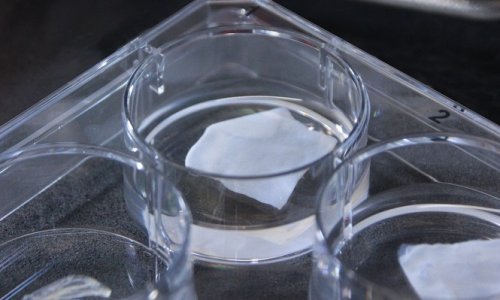Stroke
Effectiveness of treatment confirmed
A research paper published in the New England Journal of Medicine (NEJM) today confirms earlier findings that a procedure called endovascular therapy (ET) for ischemic stroke is the best treatment option for many patients by reducing the incidents of disability. This is the fourth research paper published this year that confirms the efficacy of the treatment.

"Endovascular treatment using stent retrievers will become the standard of care for patients with acute ischemic stroke" says Dr. Mayank Goyal, University of Calgary, Cumming School of Medicine, Hotchkiss Brain Institute (HBI) and Department of Radiology.
The paper was co-authored by Goyal and Dr. Jeffrey Saver, Professor of Neurology, Geffen School of Medicine at UCLA and Director, UCLA Comprehensive Stroke Center.
Overall, positive outcomes for patients increased from 35 per cent to 60 per cent.
The clinical trial is known by the acronym SWIFT-PRIME. (Solitaire with the Intention for Thrombectomy as Primary Endovascular Treatment) randomized 196 patients to receive either t-PA, a clot busting drug or tPA plus ET. The study had 39 participating sites in the United States and Western Europe.
ET is performed by inserting a thin tube into the artery in the groin, through the body, and into the brain vessels to the clot. This is done under image-guided care using an X-ray. The clot is then removed by a retrievable stent and pulled out, restoring blood flow to the brain.
This is the second NEJM publication for Goyal this year. In February Goyal, along with HBI and Department of Clinical Neuroscience members Drs. Michael Hill and Andrew Demchuk, led an international stroke trial showing that ET for ischemic stroke victims dramatically improved outcome.
The trial known as ESCAPE (Endovascular treatment for Small Core and Anterior circulation Proximal occlusion with Emphasis on minimizing CT to recanalization times), showed positive outcomes for patients increased from 30 per cent to 55 per cent. In many cases, instead of suffering major neurological disability, patients went home to resume their lives. The overall mortality rate was reduced from two in 10 patients for standard treatment of care to one in 10 patients - a 50 per cent reduction with ET.
ESCAPE was led by the HBI along with the departments of clinical neurosciences and radiology at the Cumming School of Medicine. ESCAPE had 316 patients, at 22 sites in five countries. Eleven of these sites were in Canada.
As a result of all four publications, policy makers are now in the process of rewriting international clinical care guidelines for stroke care.
Source: Press release University of Calgary
17.04.2015











